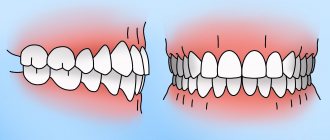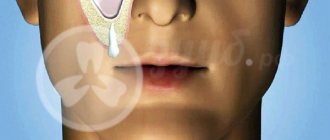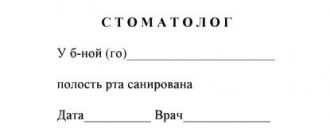In the online store of the LETO trading house you can buy all the necessary tools and materials for simple and high-quality dental restoration. The presented assortment includes several dozen fiberglass pins from trusted manufacturers. They are made in the form of thin rods that have a diameter corresponding to the size of the dental canal. Fiberglass, which forms the basis of the structure, is safe for humans and does not cause allergies. This is largely due to the popularity of these pins in modern dentistry.
Fiberglass dental prosthetics: when and why
Restoring a tooth using a pin
Fiberglass for splinting teeth
Adhesive bridge prosthetics
Many people associate the word “fiberglass” with construction work, but not with dental treatment. At the same time, fiberglass is one of the modern materials actively used in dentistry. With its help you can solve several problems at once. For example, using a fiberglass pin, doctors restore a tooth affected by pulpitis.
Application of fiberglass pins
These structures are used as a support for adhesive prostheses, as well as at the stage of preparation for restoration using crowns and filling materials. Elastic fiberglass pins allow the dentist to preserve the natural roots of even a severely damaged tooth, which is a more convenient and cost-effective restoration solution than complete prosthetics.
When working with fiberglass pins, it is worth considering some of their features.
- Products belong to the category of passively fixed ones.
- For aesthetic prosthetics, it is necessary to select those pins whose shape best matches the characteristics of the root canal.
To restore anterior teeth, cone-shaped structures with a rounded end are used. They allow maximum preservation of hard tissue and minimize the risk of longitudinal fracture. The ratio of the pin diameter to the channel diameter should be 1:4.
Various dual-curing materials can be used to secure the pins in the canal. Due to the polymerization of composites, even in hard-to-reach places, it is possible to achieve reliable strengthening of the entire structure.
Tooth restoration using a pin
Today, fiberglass dental prosthetics is a common procedure that allows you to restore part of a tooth destroyed by caries. The pin is made of thin fibers and is inserted into the dental canal. In essence, it replenishes the functions of the root. From the inside it is filled with composite epoxy resin. This combination gives durability to the denture and completely eliminates tooth corrosion.
Fiberglass prosthetics does not expose the tooth to further destruction, unlike metal pins, since fiberglass has a high degree of flexibility. Besides this, the material has other advantages.
- Lightweight and transparent, so the fiberglass pin is invisible in the coronal part of the tooth.
- Elasticity, allowing you to evenly distribute the chewing load.
- Light transmittance.
- Easy to install.
- Does not lead to root fracture.
If you follow your doctor's recommendations, a tooth on a fiberglass post can last from 5 to 10 years.
How to install the pin
First of all, the doctor will diagnose the patient and also perform all the necessary preparatory procedures. To ensure reliable fixation, it is necessary to achieve ideal preparation of the tooth, otherwise it will simply be impossible to achieve the desired result.
At the end of the therapeutic measures, depulpation and cleansing of the canal is carried out. Let us note that Moscow clinics use modern technologies to remove the nerve, so everything is done quickly and harmlessly to the tooth root. After this, treatment with phosphoric acid occurs, both the internal cavity and the surface of the crown itself are treated.
After this, the tooth is thoroughly washed with distilled water, and then dried and re-treated with a special preparation. And only upon completion of all preparatory procedures does the process of direct installation of the pin begin.
The entire operation is performed in stages with a clear sequence of actions:
- the pre-prepared pin is degreased with a special solution (for example, acetone, alcohol or chloroform), and then covered with a double layer of bonding agent;
- A composite material is placed into the root canal, which is evenly distributed along the walls of the canal (the pin itself will be processed with the same material in the future);
- then a pin is placed inside the channel;
- The filling material hardens under the influence of special lamps.
The final stage of treatment is the restoration of the supragingival part of the crown. Note that the specific recovery method is prescribed individually based on the degree of development of the disease, as well as the characteristics of the individual patient. For further treatment, both composite restoration and the installation of a classic crown can be used. However, in the second case, the material of the crown does not have any significance.
Fiberglass for splinting teeth
With periodontitis, bone tissue gradually atrophies, exposing the roots of the tooth, which can lead to gradual loosening and tooth loss. To strengthen the dentition, doctors splint teeth using fiberglass thread, which acts as a retainer. Splinting holds loose teeth firmly and prevents them from completely falling out. This makes it possible to gain time and start treating the gums and eliminating the causes of the problem.
Manufacturers' offers
Fiberglass systems are supplied to the pharmaceutical market by many companies operating in the field of dentistry.
- American 3M ESPE (under the Relyx Fiber Post brand).
- Swiss HaraldNordin (Glassix) and Produits dentaires (Fibrapost Lux).
- German DMG (LuxaPost).
- French Maillefer (Easy Post), etc.
In addition to a set of fonts, the set of stands usually includes an adhesive system and tools for preparing the pin bed.
When choosing the right material, the dentist takes into account the diameter and shape of the rods (cylindrical, conical, conical-cylindrical). Takes into account the presence of reamers, drills, and adhesive in the kit.
Glassix
HaraldNordin produces cylindrical models in 3 sizes - 1.20, 1.35 and 1.50 mm. One end of the rods is rounded. The set contains 3 drills for finishing canals.
Glassix products have all the main advantages of fiberglass fonts:
- high strength;
- elasticity close to tooth tissue;
- high radiopacity;
- light conductivity.
Ikadent
The IKADENT company produces models of 2 shapes - cylindrical (with a rounded end and diameters of 1.0, 1.2, 1.4 and 1.6 mm) and cylindrical-conical (1.25, 1.4 and 1.55 mm). In addition, the company produces an original product - a rod with a developed area (with a shoulder), on the basis of which it is possible to perform direct (without forming a stump) volumetric tooth restoration.
Advantages of IKADENT products
- The elastic modulus (about 35 GPa) is comparable to the parameters of natural dentin. When installing the rod, a homogeneous structure is created that evenly transfers the load to the root.
- There is the possibility of direct volumetric restoration of the coronal part when using a model with a collar.
- There is no need for special processing or special materials to ensure adhesion. The product material is adapted for different adhesives.
- Low price.
Relyx Fiber Post
The 3M ESPE company produces products with a length of 20 mm and diameters of 1.3, 1.6 and 1.9 mm. The delivery set includes reamers of appropriate diameters and calibration drills. The selection of a pin for a specific tooth can be done using a special table .
Relyx Fiber Post products have the following features.
- High strength of connection between the product and the adhesive without the use of primers and special surface treatments.
- Color coding , making it easier to select the required tool (pins and the corresponding tool have the same color).
- The nozzle for introducing glue has a special design that allows you to fill the channel with adhesive without the formation of pores.
Easy Post
The French company Maillefer produces cylindrical-conical models of 3 diameters - 0.8, 1.0 and 1.3 mm. The material is chemically inert, non-toxic (complies with ISO 0993-5 standard), and can be sterilized by autoclaving.
The model is made of 40% epoxy resin and 60% fiberglass enriched with zircon. One package contains 10 fonts and their corresponding finishing drills.
Easy Post fonts are distinguished by:
- High radiopacity.
- elasticity comparable to the elasticity of dentin.
- The cylindrical-conical shape is maximally adapted to the channel configuration, the pointed tip avoids the piston effect when installing.
Fibrapost Lux
Swiss PD produces conical-cylindrical models with cylindrical part sizes of 1.3, 1.5, 1.7 and 1.9 mm, conical parts - 0.85, 1.06, 1.26 and 1.47 mm.
The material composition is 20% multi-axis (all-round) woven glass fiber and a UDMA composite matrix.
Fibrapost Lux products have:
- increased radiopacity (200%);
- elasticity 35 GPa.
- grooves on the surface, providing high light conductivity in all directions and mechanical connection with the bond in addition to the chemical one.
General overview
A pin is a supporting device that makes it possible to attach any prosthetic structure. The durability and usefulness of the artificial tooth depends on how strong and reliable the structure is.
The rod, made of high-quality fiberglass, fully meets all the stated requirements for this dental device.
The material has found its application in many areas of medicine, due to its absolute hypoallergenicity, high elasticity, and the ability to minimize the force load on the soft tissues of the human body.
Elements made from this component are light, durable, and very flexible, which allows them, if necessary, to bend in the desired direction and then return to their original position, maintaining their integrity.
The material has an almost transparent color , which makes its presence invisible through the coronal part of the prosthesis.
Reviews
If you have installed a fiber post, please leave your review at the bottom of the page. We are interested in everything - the sensations you experienced during installation, the “behavior” of the restored tooth during use, the length of time it serves/has served you.
All this information will help other patients choose the optimal treatment method for them, and help us improve our services.
If you find an error, please select a piece of text and press Ctrl+Enter.
Tags: teeth building fiberglass pin pin
Did you like the article? stay tuned
What is fiberglass in dentistry?
Modern medicine does not stand still and is constantly evolving. For example, fiberglass is used in dentistry to splint teeth; what is it , you ask? So, let's start to figure it out in order. All people, sooner or later, encounter the problem of periodontal disease in their lives. Periodontium is the tissue that holds the tooth in its place; accordingly, periodontitis is nothing more than a disease of these same tissues, which occurs when the rules of personal hygiene are not followed and in various pathologies. This disease leads to such sad consequences as mobility, displacement and, as a result, tooth loss. But modern dentistry has found a method to avoid this outcome.
Read also: Crooked teeth, what to do
This is splinting teeth with fiberglass, or more precisely with fiberglass tape. This is an effective and gentle technology for strengthening teeth. Splinting with fiberglass tape has a number of advantages compared to other methods (bridges, ligature splints, solid splints). For example, it provides long-term and reliable stabilization of the tooth, is a good support for an artificial tooth, and is easy to remove and install a new one if necessary.
The main advantage is the affordable price. Fiberglass splinting allows you to avoid loosening and displacement of teeth, prevents the risk of damage to the periodontal ligament, and the teeth are fixed in a non-traumatic position. The technique of splinting teeth includes several important steps. First, preparations are made for installing a fiberglass splint (for this, deposits that have formed on the teeth are removed, then the surface of the teeth is etched).
Secondly, they prepare for applying the tape, then gradually lay the tape in the groove. After laying, polymerization is carried out and, as the final stage, grinding and polishing of the surface is carried out.
All work on splinting teeth in dental clinics is carried out by highly qualified specialists, which eliminates the risk of any complications. Due to the fact that this is a relatively new method, all work is carried out using the latest equipment of the latest developments.
So, now you know what it is, fiberglass in dentistry and for what purposes it is used. Be healthy!
Service life
The service life of the product directly depends on compliance with medical recommendations and operating conditions. On average it is about 4 – 5 years.
With high-quality material, proper installation and careful handling, this period can be almost doubled.
The main requirement is to exclude the development of caries, maintain oral hygiene, and avoid mechanical overload on the restoration area.
Caring for restored teeth
To ensure that the restorations retain their shape, color and are firmly held in the cavity for a long time, follow a few simple recommendations:
- brush your teeth 2 times a day with a brush and toothpaste without abrasive particles that can leave scratches on the composite,
- rinse your mouth with clean water after eating or drinking coffee/tea: to prevent the restorations from becoming stained,
- Avoid consuming hot and cold foods at the same time: due to temperature changes, the composite may crack,
- Avoid very hard foods and using your teeth for other purposes (opening lids, biting pencils, etc.): cracks may appear on the tabs,
- For preventative purposes, visit your dentist twice a year.
Preparation
Before you begin attaching the pin, you need to prepare the tooth for this manipulation. This is done like this:
- Artificial expansion of the canals is carried out as necessary if their natural width does not allow for high-quality implantation of the structure. Manipulations are performed by changing drills from a narrower diameter to a wider one, gradually bringing the hole to the desired size.
- Before proceeding with these procedures, the patient is given an X-ray - this is necessary to obtain the most complete clinical picture of the condition of the tooth, especially that part of it that is located in the subgingival zone.
It is important to understand at what angle the root system is located, what branches or bends there are.
What materials are used
The most common materials are liquid and plastic composites, synthetic polymers that harden due to a chemical reaction, incl. under the influence of light. In essence, this is an ordinary composite filling composition - but processing in a laboratory makes it less susceptible to subsidence and abrasion. The liquid composite is used as the base material for temporary restorative inlays or as a lining for a fiberglass post (for stumps). For example, Tempocor brands from VladMiVa and Dia-Temp from DiaDent are used for temporary restorations.
For long-term restorations, solid blocks for milling are used - Tetric CAD from Ivoclar Vivadent, Paradigm MZ100 from 3M ESPE, hybrid blocks Grandio blocs from VOCO. Materials for milling are denser and stronger, wear less easily during use, and practically do not sag over time.
Main directions
The first is fiberglass pins, which are used in endodontic methods of tooth restoration; they can be used in isolation (exclusively when filling root canals) or be part of more complex structures, for example, stump inlays. Based on such pins, bridge-like and cantilever structures can be made, the obvious advantage of which will be a more favorable distribution of the load - not only on the part of the tooth adjacent to the prosthesis, but also involving the internal walls of its crown and root parts.
The second is fiberglass splinting of teeth with exposed clinical tooth necks and pathological mobility. Unfortunately, tooth mobility is a very common problem, especially in the frontal part of the dental arch in the lower jaw, which has traditionally been solved by interconnected crowns that unite the affected teeth into a single monoblock. The fiberglass prosthesis is glued without direct contact with the gums, does not complicate daily dental care, does not require additional preparation, does not complicate eating and is invisible when smiling.
Third, the use of bridge and cantilever prostheses based on fiberglass: initially, the idea of gluing artificial teeth to replace lost ones was considered a temporary measure, and was used for the period until the healing of the hole occurred, before permanent dental prosthetics, but the durability of such structures confirmed their right to independent existence in the present time is actively used as a separate type of fixed prosthetics.
Contraindications for installation
Contraindications include childhood, pregnancy, and the presence of cracks in the roots and inflammation underneath them. As for contraindications specifically for the varieties, it is not recommended to fix a composite restorative inlay on the front teeth and in case of large damage to the chewing crowns - the exception is dense composites for milling. Composite stumps are not installed on chewing teeth, because the latter experience the highest loads during grinding of food.
“The dentist did not advise me to make a composite inlay at all. He said she wouldn't last long. And in a few years you will have to get prosthetics again. Therefore, I decided to immediately make a good ceramic one, they say that they can last a very long time. Unless, of course, you chew nut shells with them.” Svetlana Alekseevna, review from forum.stom.ru
Our prices
There are many options for restoring teeth. This means that patients of any income will be able to afford a beautiful smile, as well as restoration of the chewing ability of their teeth. Without an examination, you can only find out how much it costs to restore a tooth. The exact price is determined based on the complexity of the destruction and the general condition of the teeth and gums.
To find out the cost of complete restoration of hard dental tissues, schedule a consultation with our dentistry by calling.
| Code no. | Name of procedures | Unit of measurement | Cost, rub. |
| 303 | Treatment of medium caries (ultrasound, cavity formation) | 700,00 | |
| 305 | Placement of a light-composite filling (Esthet-X, Filtek) | 3 500,00 | |
| 312 | Veneer coating with repositioning of teeth (complex) | 1 unit | 9 500,00 |
| 314 | Artistic restoration (changes in shape and position) complex | 1 unit | 13 000,00 |
| 317 | Tooth restoration using a fiberglass pin and reinforced composite material (Sonicfil, Luxocor) | 5 500,00 |
* The prices indicated on the website are not a public offer. The exact cost of treatment can only be determined at an appointment with a doctor.
Prices for treatment in Moscow full price list
Share on social media networks:
Article Expert:
Razumenko Evgeniy Gennadievich
Chief physician and founder of the dental clinic. He has been working in aesthetic dentistry for many years, restoring teeth of any complexity with ceramic and composite restorations. Winner of competitions in aesthetic dentistry. Applies CAD/CAM technologies in prosthetics.
Work experience 22 years
Indications and contraindications
Adhesive prosthetics, like any other medical procedure, has its own indications and warnings. The doctor will recommend this option in the following cases:
- if it is necessary to replace one or two missing frontal teeth, if the adjacent ones are well preserved;
- if you urgently need to correct a dental defect;
- as a temporary solution for two-stage implantation;
- if the patient categorically refuses other orthodontic methods.
Contraindications for installing an adhesive bridge are:
- the presence of significant destruction of supporting teeth;
- pathological abrasion and mobility of supporting teeth, their incorrect location in the mouth;
- absence of more than two teeth;
- diagnosing bruxism, parafunction, and advanced periodontal disease in a patient.
Advantages and disadvantages
The advantages of composite inlays are as follows:
- aesthetics: restorative restorations look like natural teeth, accurately reproducing the shade and shape, and stump restorations (having a natural tone) do not show through the artificial crown,
- materials for composite inlays are relatively inexpensive: they are approximately 30% more expensive than fillings made from light- or chemical-curing polymers,
- composites have hardness and ductility, are easy to process in laboratory conditions,
- restorations do not sag over time (this applies to a greater extent to milling blocks),
- a tighter fit to the tooth walls and root canals, when compared with fillings or conventional pins: this eliminates the penetration of cariogenic microbes.
- the restoration has a longer service life compared to a filling or a conventional pin,
- restorative ones lend themselves well to repair using the direct method (i.e. directly in the oral cavity).
%akc72%
But composite microprostheses also have negative qualities. Let's take a closer look at their disadvantages:
- composites do not have such high strength and wear resistance compared to ceramics, metals and zirconium/aluminum dioxides,
- the liquid composite is susceptible to chipping and can peel off from the walls of the cavity: functionality is at a high level only in the first years of operation,
- the composite can be irrevocably colored by food pigments.
All of the listed disadvantages become a serious obstacle to truly long-term restoration service. Therefore, it is recommended to make microprostheses from higher quality materials (we will talk about them later when considering alternatives). And composite tabs (even ordinary ones) should be considered only as a temporary recovery option.










